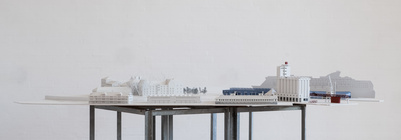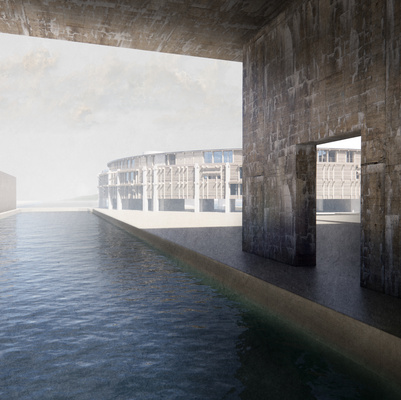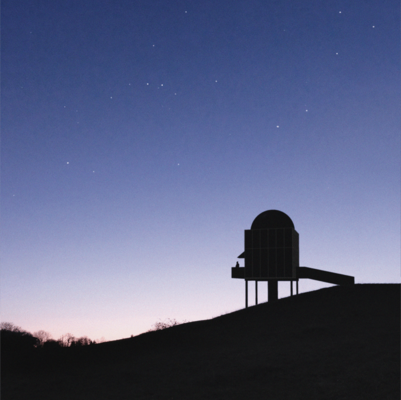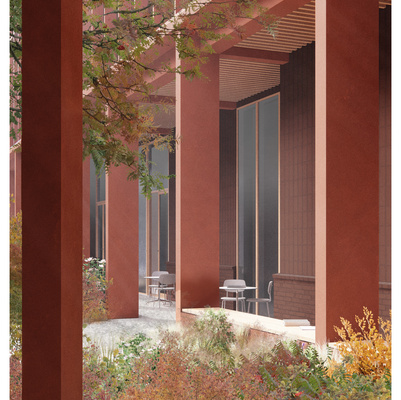Energy storage - energy storage as a collective awareness of resources
In our daily lives, we rely on vast networks of resources that support essential functions in our society. These networks connect us with each other and the world around us, but they often go unnoticed. As our energy consumption grows, the physical impact of our consumption becomes less visible. Power plants, data centers, and other facilities are situated far from urban areas and designed for machines rather than human interaction. We receive our energy through underground tunnels, and apart from the occasional bill, we rarely confront the reality of our consumption. This lack of visibility makes it challenging to critically engage with the phenomenon. Perhaps it's time for a built environment that bridges the gap between ourselves and our consumption, especially in the Anthropocene era.
Through the establishment of three energy storage facilities at Frederiksberg Hospital, this project aims to create a new type of building that encourages interaction between people and energy. Each building includes a stone energy storage unit that utilizes excess heat for various activities requiring warmth, such as workshops, food production, and heated baths. This concept introduces a fresh approach to neighborhood houses where humans coexist with machines, giving our energy consumption a physical presence in our city and in our consciousness.
This project is done with Majse Marie Nørhald.






























